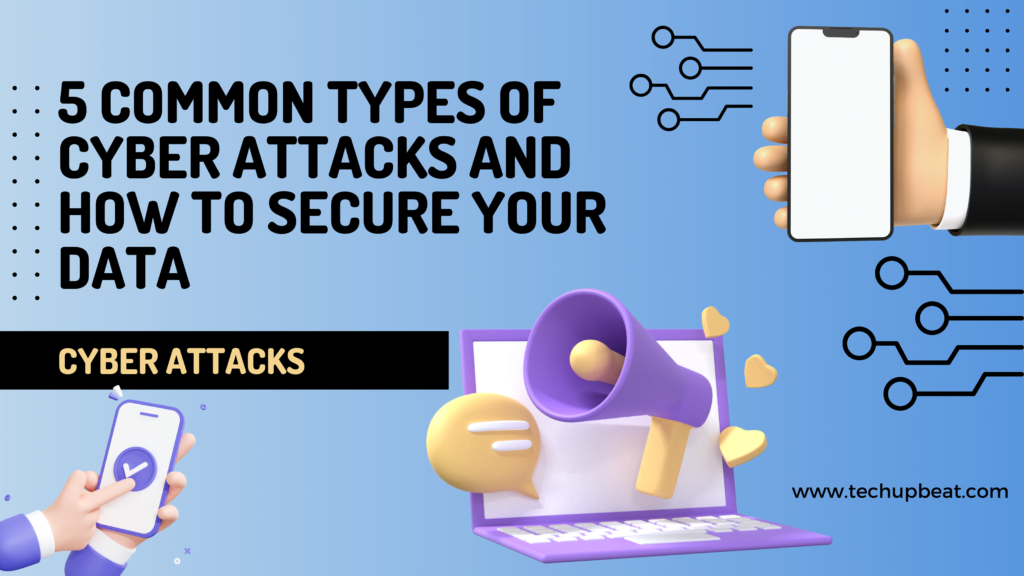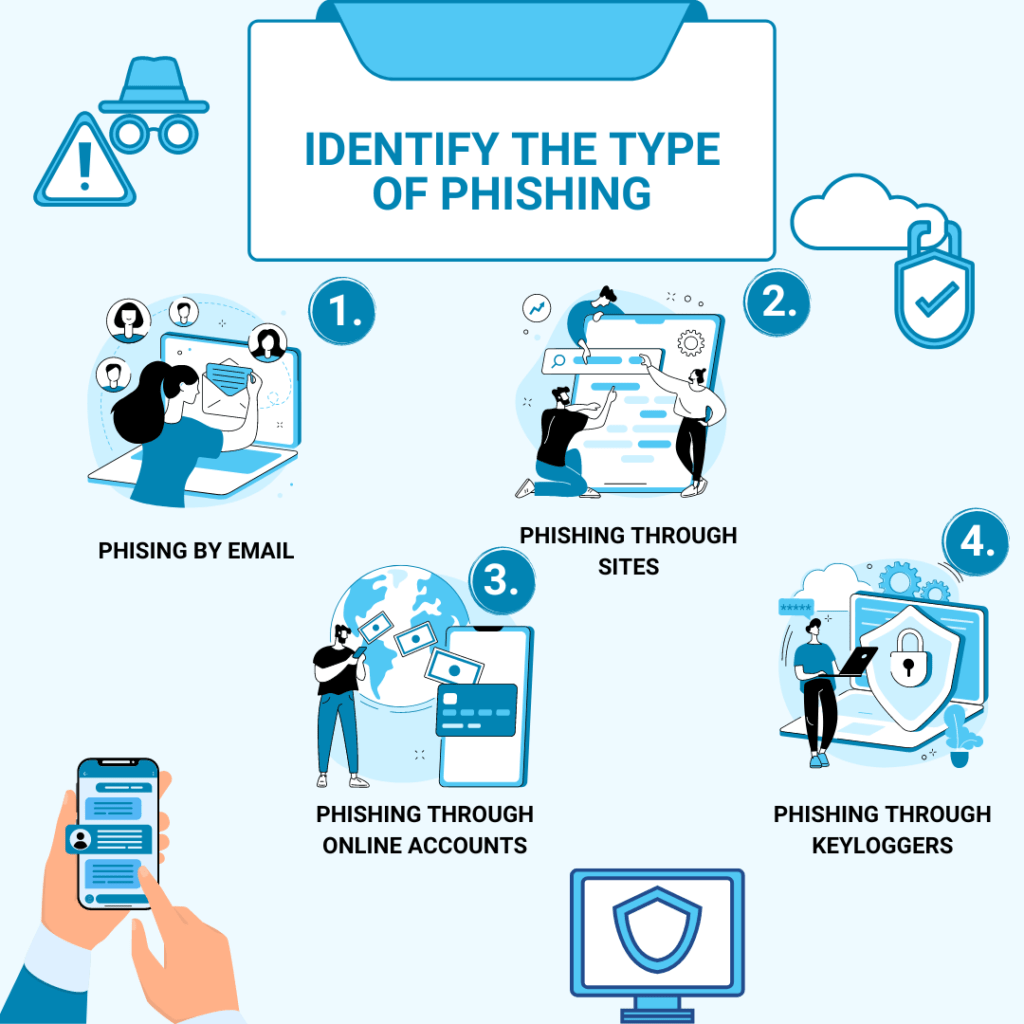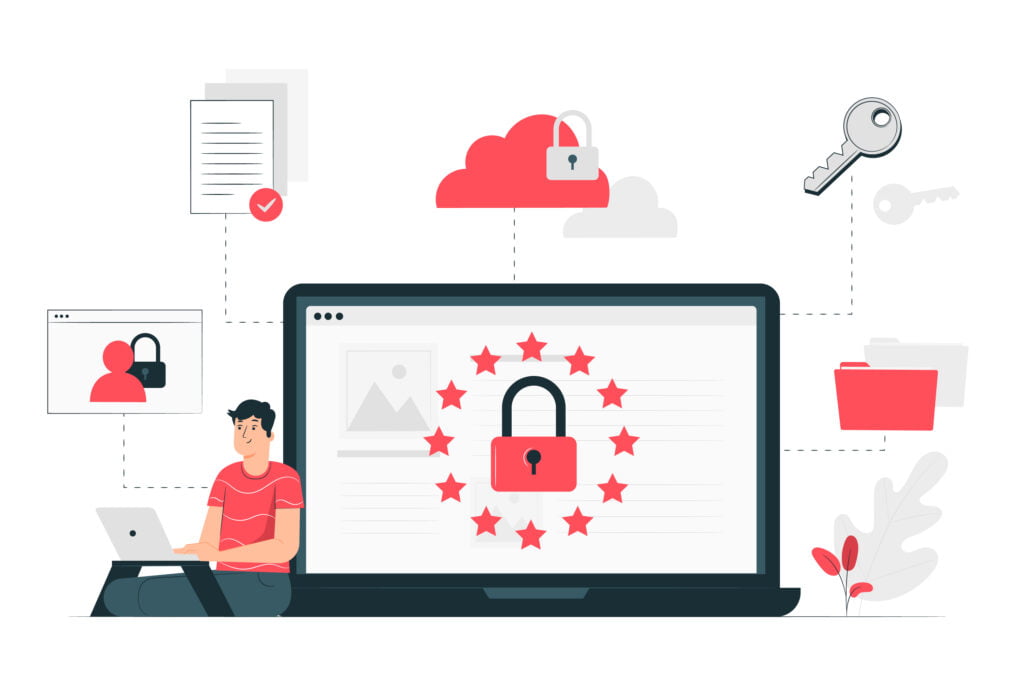
What is Cyber Attacks?
A Cyber attacks is an attempt by cyber criminals, hackers and other digital ad versaries to break into a computer network or system, usually with the aim to altering, stealing, distroying or disclosing information.
Cyber attacks can target a wide range of victims, from individual users to businesses and even governments.
When hackers target businesses or other organizations, they often target valuable company assets such as intellectual property (IP), user data product, or payment details.
In this today’s article, we will explore the five most common types of cyber-attacks and provide you with practical tips on how to secure your data effectively.
- Phishing Attacks
- Ransomware Attacks
- DDOS Attacks
- Man-in-the-middle Attacks
- Insider Threats
Phishing Attacks
Phishing attacks are one of the most prevalent forms of cyber threats, where attackers use fraudulent emails or messages to trick individuals into divulging personal information such as login credentials or credit card details.
These emails often appear legitimate, with links to fake websites that mimic reputable companies or organizations.
How to Protect Yourself :
- Be cautious of unsolicited emails asking for personal information.
- Verify the sender’s email address before clicking on any links.
- Enable two-factor authentication for an added layer of security

Ransomware Attacks
Ransom ware attacks involve malware that encrypts a victim’s files and demands a ransom in exchange for restoring access to the data.
These attacks can be devastating for individuals and businesses, causing significant financial losses and reputational damage.
How to Protect Yourself :
- Regularly back up your data to an external storage device.
- Install reputable antivirus software to detect and prevent ransom ware attacks.
- Avoid clicking on suspicious links or downloading attachments from unknown sources.
DDoS Attacks
Distributed Denial of Service (DDoS) attacks overwhelm a targeted website or online service with a flood of traffic, causing it to become slow or inaccessible to legitimate users.
These attacks can disrupt operations and result in financial losses for businesses.
How to Protect Yourself :
- Implement DDoS mitigation solutions to identify and block malicious traffic.
- Monitor network traffic for unusual patterns or spikes in activity.
- Utilize content delivery networks (CDNs) to distribute traffic and reduce the impact of DDoS attacks.

Man-in-the-Middle Attacks
In a Man-in-the-Middle (MitM) attack, an attacker intercepts communication between two parties without their knowledge, allowing them to eavesdrop on sensitive information or manipulate the data being exchanged.
These attacks are particularly common on unsecured public Wi-Fi networks.
How to Protect Yourself :
- Use secure, encrypted connections (e.g., HTTPS) when accessing websites or online services.
- Avoid conducting sensitive transactions over public Wi-Fi networks.
- Utilize virtual private networks (VPNs) to encrypt your internet traffic and protect your data from MitM attacks.

Insider Threats
Insider threats refer to individuals within an organization who misuse their access to sensitive information for malicious purposes.
These insiders may intentionally leak confidential data, install malware, or engage in other unauthorized activities that compromise the security of the organization.
How to Protect Yourself :
- Implement strict access controls and monitor employee activities to detect suspicious behaviour.
- Conduct regular security awareness training to educate employees on the risks of insider threats.
- Encrypt sensitive data to prevent unauthorized access or manipulation.
“Cyber security is not a one-time effort but a continuous process of vigilance and adaptation to evolving threats.”
By staying informed about the common types of cyber-attacks and implementing proactive security measures, you can significantly reduce the risk of falling victim to hackers and protect your valuable data from unauthorized access or manipulation.
Remember, cyber security is everyone’s responsibility, and taking the necessary steps to secure your data will ultimately safeguard your digital assets and privacy in an increasingly connected world.
